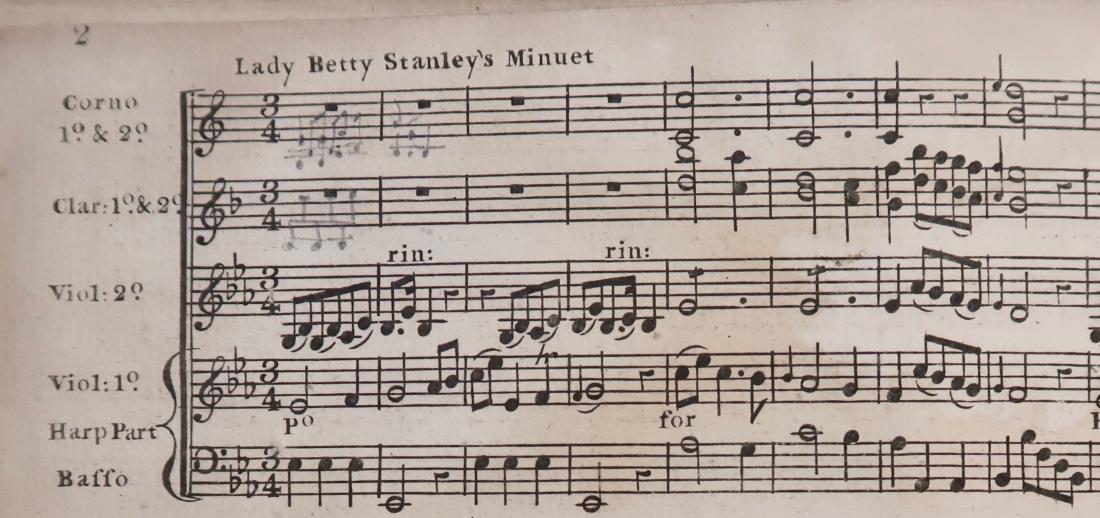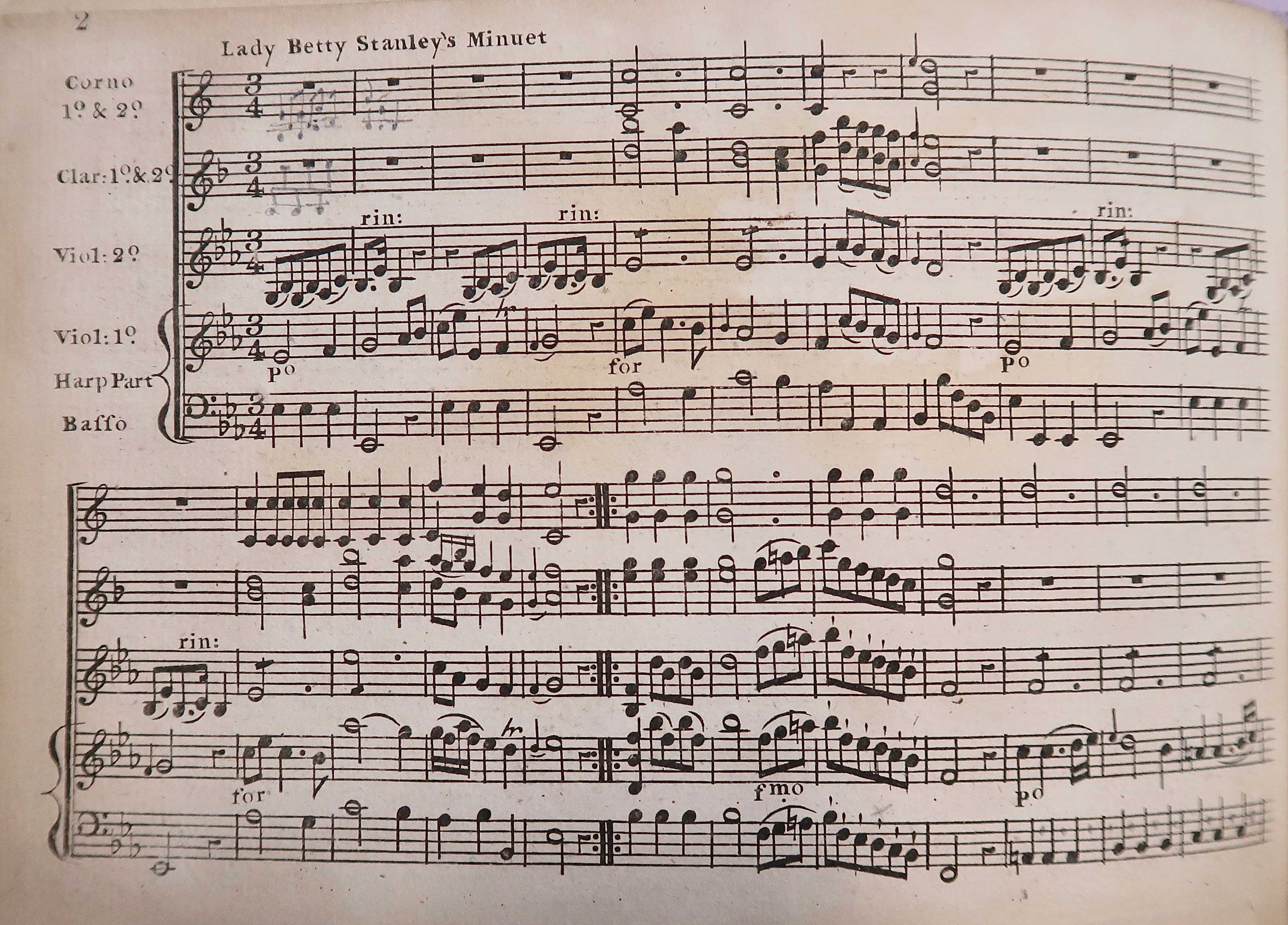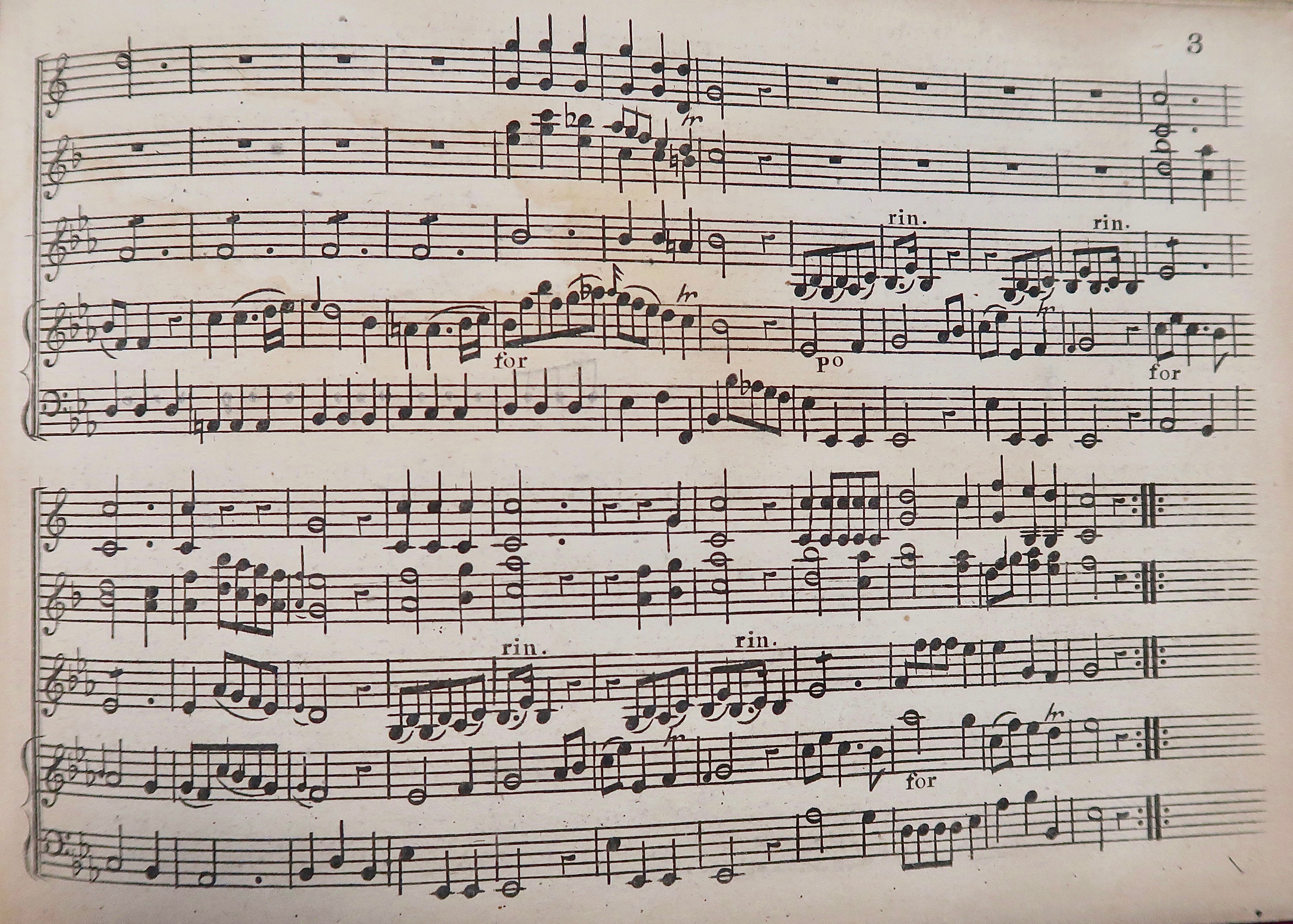
6th Earl of Kelly: The Favourite Minuets Perform’d at the Fête Champêtre (1774) - Lady Betty Stanley's Minuet
The Favourite Minuets Perform’d at the Fête Champêtre given by Lord Stanley at the Oaks and Composed by The Right Honble the Earl of Kelly (London: William Napier, [1774])
-
Lady Betty Stanley’s Minuet
Image courtesy of the British Library Board, Music Collections b.53.b.(5.), p. 2
To download mp3 files either click on the three dots or right-click on the player and choose the save/download option.
Recording Details:
Ingrid E. Pearson and Meline Le Calvez - clarinets
Peter Moutoussis and Alexander Boukikov - horns
Taisia Sandetcaia and Wiebke Thormählen - violins
Joseph Crouch - cello
Recorded at the Royal College of Music, London, 20 May 2021
SCORE: Kelly Lady Betty Stanley's Minuet
PARTS: Kelly Lady Betty Stanley's Minuet
This publication of eight scored minuets by Thomas Alexander Erskine, 6th Earl of Kelly (1732-1781) appeared several months after a lavish fête champêtre was held at The Oaks in Surrey on 9 June 1774 to celebrate the approaching marriage of Lady Elizabeth (Betty) Hamilton and Edward Smith Stanley, future 12th Earl of Derby. Kelly was one of the most well-known Scottish composers during the late eighteenth century, who studied composition in Europe during his Grand Tour and who was actively involved in the musical scene in Edinburgh (Johnson 2001).
The event received considerable attention in the press and appeared to stimulate the popularity of the fête champêtre as a genre of late eighteenth-century fashionable entertainment (Nelson 1999). Dance and music permeated the occasion, from the performative rusticity of dancing peasants, through to a series of alternating masques and balls. These mostly took place in a magnificent temporary pavilion designed by Robert Adam, which included a ballroom. The minuets formed part of the final ball which was opened by Lord Stanley and Lady Hamilton. However, many of them had been previously published and were simply retitled to suit the occasion, with Kelly’s alterations consisted largely of the addition of fairly simple wind and brass parts.
All but one of the minuets are scored for two clarinets, two horns, two violins and basso, with oboes substituting for the clarinets, a choice of instrumentation that reflects other minuets Kelly produced. On 11 June 1774, the Morning Chronicle observed that “The person who had the engagement of the music for the ball at Oaks, on Thursday, provided an open carriage that took sixteen of them, who entertained all they passed on the road with marches, jiggs, hornpipes, &c.” While the orchestra for the opening masque was under the direction of François-Hippolyte Barthélemon, given the separation that often occurred between concert forces and dance musicians during combined events, and the sheer expenditure lavished on the fête champêtre, it’s highly likely that a dedicated dance band was hired.
The British Library copy of the score contains some handwritten annotations which suggest how the inner parts may have been played on a keyboard.
Further Reading:
Johnson, David. 2001. “Kelly [Kellie], 6th Earl of.” In Grove Music Online. Accessed July 29, 2021.
Nelson, Claire. 1999. “The Party of the Century: Lord Stanley’s Fête Champêtre.” The Consort 55: 30-45.


Lady Betty Stanley’s Minuet published by William Napier, 1774, courtesy of the British Library Board, Music Collections b.53.b.(5.), pp. 2-3.
